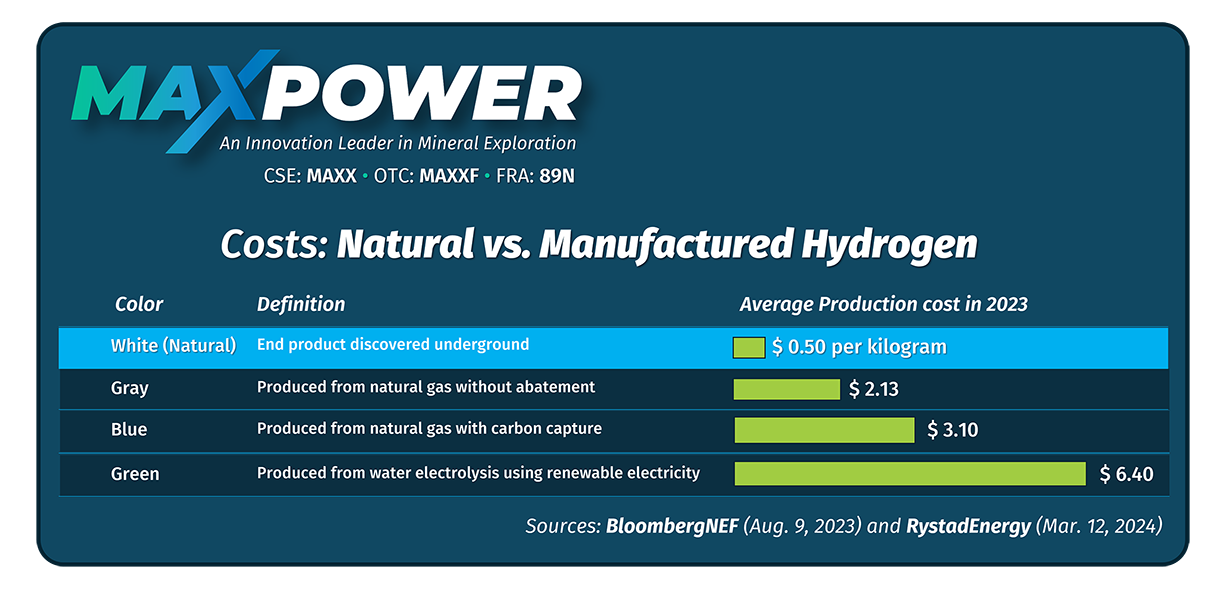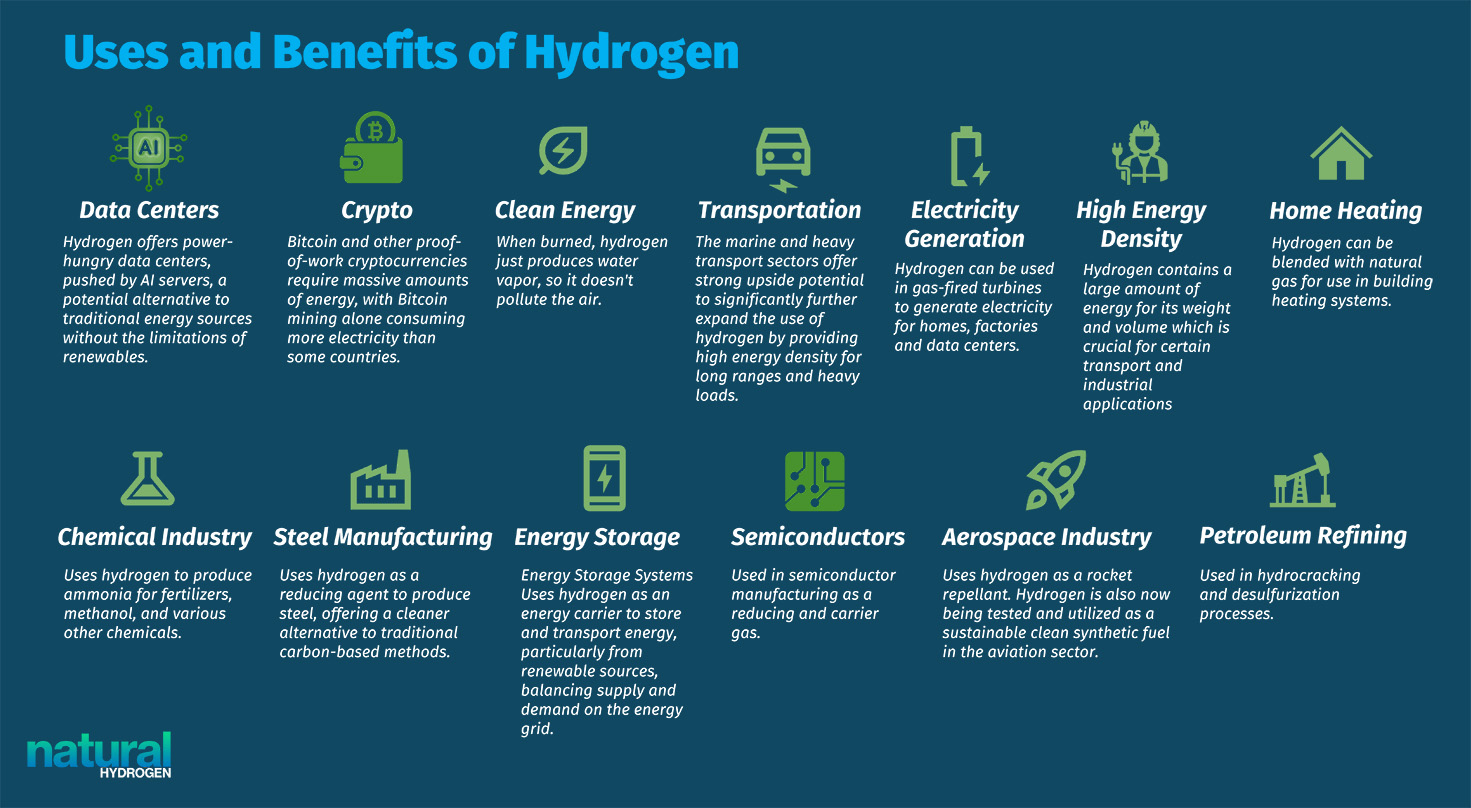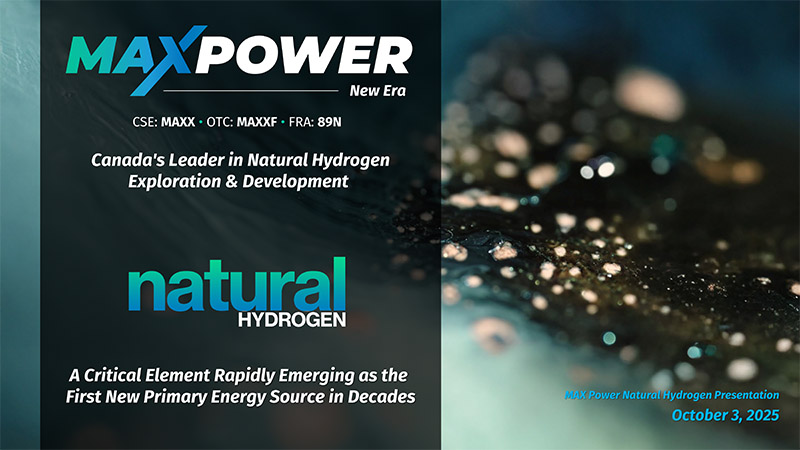Natural Hydrogen
A naturally occurring and emissions-free energy source now known to exist in the earth’ subsurface , Natural Hydrogen represents a significant potential disruption to traditional energy systems.
MAX Power is trailblazing the exploration and development of Natural Hydrogen in Canada, positioning itself as a global leader in this rapidly emerging sector that could turbo-charge the clean energy transition and provide greater energy security for North America.
MAX Power will be carrying out Canada’s first-ever dedicated Natural Hydrogen deep drilling program beginning this quarter (Q4 2025) with a robust “test of concept” well on the 200-km-long Genesis Trend in southern Saskatchewan. The “Lawson” target has all the elements necessary for a Natural Hydrogen accumulation (source rocks, migration pathways, reservoirs, seals and traps), plus 4-way closure. Genesis, just one of several MAX Power land packages in Saskatchewan, has an abundance of early-stage prospects which can be quickly advanced following completion of this initial well.
With an industry-leading team of geoscientists, engineers and operators who know how to execute, MAX Power’s aggressive “ground game” has a strong chance to deliver the world’s first commercial Natural Hydrogen discovery.
Potential Global Resource of Natural Hydrogen
Stochastic model results predict a wide range of values for the potential in-place (global) hydrogen resource [103 to 1010 million metric tons (Mt)] with the most probable value of ~5.6 × 106Mt.
Although most of this hydrogen is likely to be impractical to recover, a small fraction (e.g., 1 × 105 Mt) would supply the projected hydrogen needed to reach net-zero carbon emissions for ~200 years. This amount of hydrogen contains more energy (~1.4 × 1016 MJ) than all proven natural gas reserves on Earth (~8.4 × 1015MJ).
Source: Geoffrey Ellis and Sarah E. Gelman, Science Advances, Dec. 2024
Advantages of Natural Hydrogen
- Low cost vs. manufactured hydrogen and relatively quick to deploy
- Low carbon intensity – very low emissions compared to manufactured hydrogen, 99% of which involves fossil fuels while the other 1% (“green” hydrogen) relies on wind and solar and remains very costly
- Natural Hydrogen = “end product” under the ground, removing costly technological processes involved in manufactured hydrogen
- Accumulations of Natural Hydrogen gas with dynamic flow rates have the potential to replenish perpetually
- Very environmentally friendly – the purest, greenest hydrogen possible with no external energy or water inputs
- Does not require fracking or hydraulic stimulation to be produced
- Minimal surface disruption




